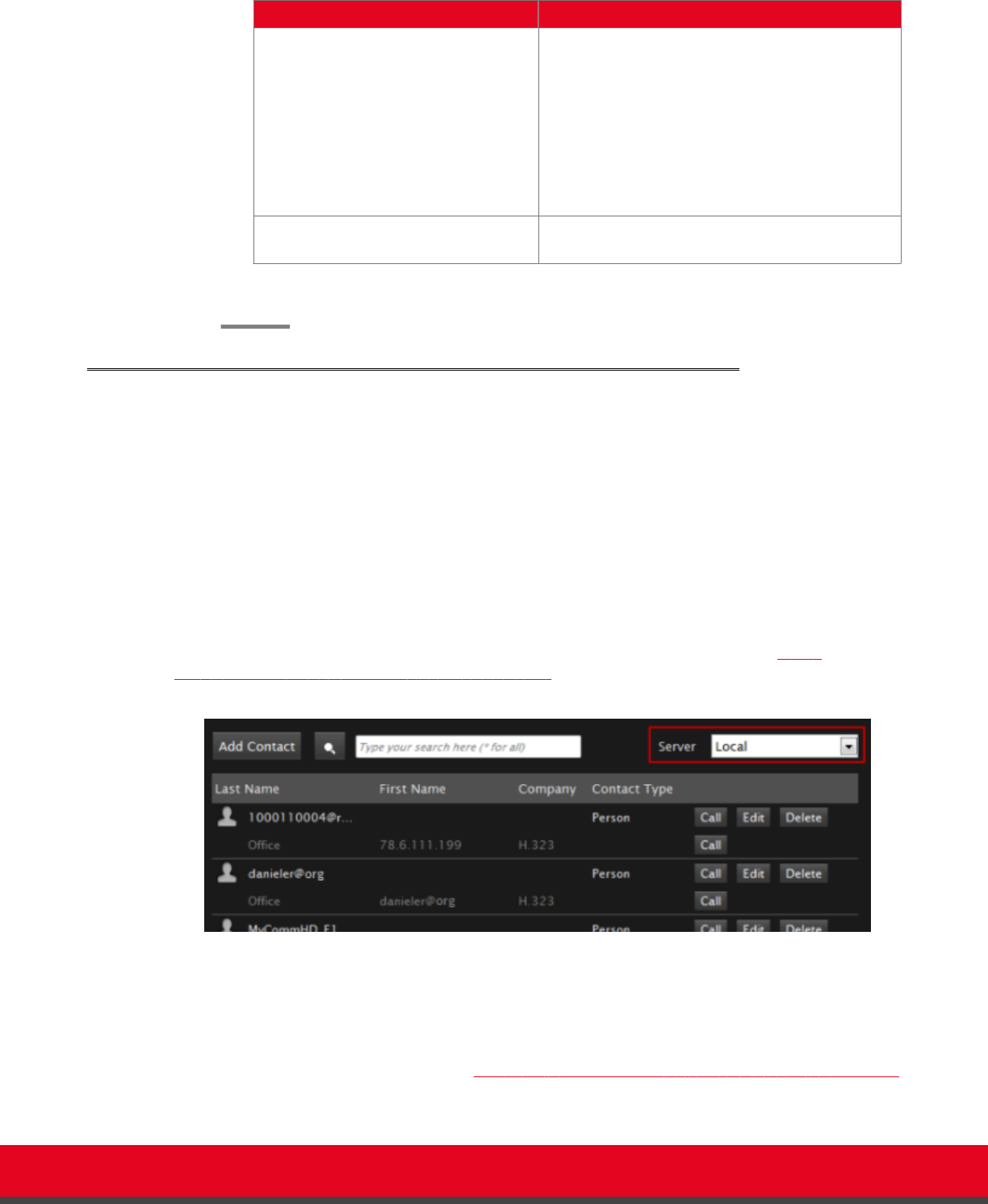Installation guide
Table Of Contents
- Installation Guide for Scopia XT5000 Endpoint with Embedded Server for IP Office Version 3.2
- Table of Contents
- Chapter 1: About the Scopia XT Endpoint for IP Office
- Chapter 2: Installation Workflow for Scopia XT Endpoint for IP Office
- Chapter 3: Planning the Topology of the Scopia XT Endpoint for IP Office Deployment
- About the Scopia XT Endpoint for IP Office Embedded MCU
- Planning the Topology of Scopia XT Endpoint for IP Office with Scopia XT Desktop
- Planning NAT and Firewall Traversal with Scopia XT Endpoint for IP Office
- Supporting ISDN Connectivity
- Implementing External API Control
- Implementing Port Security for the Scopia XT Endpoint for IP Office
- Chapter 4: Prerequisites for Setting up the System
- Chapter 5: Setting up the Scopia XT Endpoint for IP Office
- Mounting the XT Codec Unit
- Connecting Scopia XT Endpoint for IP Office to Your Network
- Connecting a Computer to the Scopia XT Endpoint for IP Office
- Selecting the Computer Display Resolution
- Connecting Audio Equipment to the Scopia XT Endpoint for IP Office
- Connecting the Video Equipment to the Scopia XT Endpoint for IP Office
- Connecting the Primary XT Premium Camera
- Connecting the Optional USB Camera
- Connecting the Optional XT Premium Camera
- Connecting Cameras for Controlling the Optional XT Premium Camera with the XT Remote Control Unit
- Connecting the Optional Scopia XT Camera Switch
- Connecting a DVD or Blu-ray Player
- Connecting Analog Video Equipment
- Installing the Batteries of the XT Remote Control Unit
- Chapter 6: Initial Configuration
- How to Control the XT Endpoint
- Registering and Enabling your Scopia XT Endpoint for IP Office license
- Performing Basic Configuration
- Registering the XT Endpoint to IP Office
- Setting Basic System Information
- Configuring Video Connections
- Configuring Audio Connections
- Configuring Network Settings
- Chapter 7: Securing your Scopia XT Endpoint for IP Office
- Chapter 8: Troubleshooting the Scopia XT Endpoint for IP Office

Field Name Description
Select dialing number format mode If your XT Codec Unit is not registered with an
H.323 gatekeeper, you can still place a call to an
endpoint registered with a gatekeeper. Check
which format of dialing the gatekeeper accepts and
configure it in this field: <gatekeeper
number><separator> <extension of the called
endpoint>, or <extension> <separator><number>.
The default syntax is
<number><separator><extension>.
Separator Select the field separator accepted by the
gatekeeper. The default separator is ##.
9. From the web interface only, select Save.
Configuring Scopia XT Endpoint for IP Office to use an LDAP
Directory
About this task
This procedure describes how to manage the contacts of your endpoint using any of a number of
different types of LDAP servers.
LDAP servers are accessed using the H.350 protocol, which enhances the LDAP standard to include
video endpoint information.
You can define up to 100 LDAP servers either from the endpoint itself or from the web interface. The
LDAP servers visible from the Contacts page are only those labeled as Preferred. Select one of the
preferred LDAP servers from the Server field in the contacts page to view its contacts (
Figure
76: Viewing and editing contacts in Local LDAP server on page 127).
Figure 76: Viewing and editing contacts in Local LDAP server
You can define these types of LDAP servers:
•
The local built-in LDAP server
You can define only one local LDAP server. When selected, you can edit, create or delete the
details of any contacts stored locally (Figure 76: Viewing and editing contacts in Local LDAP server
on page 127). The local LDAP server has a password which can be changed if needed.
Installation Guide for Scopia XT5000 Endpoint with Embedded
Server for IP Office Version 3.2
Initial Configuration | 127










